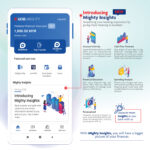A Red Hat-commissioned study by IDC discovered that Southeast Asia has three different levels of maturity when it comes to its organisations’ mobility journeys. Surveying 75 organisations with over 500 employees each, across three countries – Singapore, Malaysia and Indonesia – IDC concluded that while a number claim to have a strategy around mobility, quite a few still struggle with embedding it into their processes.
In general, enterprises are aware of the power of mobility when it comes to improving customer experience, gaining competitive advantage and improving employee productivity. Banks in particular recognise this and have moved ahead of other industries in terms of generating new revenue streams via mobility strategies.
Two out of five banks surveyed, have planned budgets for mobility initiatives.
For Malaysia in particular, there is a pronounced lack of resources and skills in mobile app development, and many enterprises are in experimentation mode right now while trying to find justification for more serious concerted investment into a mobility strategy.
Red Hat Head of Business Development for Mobile in Asia Pacific, Gerald Khor presented results of the survey together with Red Hat General Manager and VP Damien Wong. He also summed up the benefits that can be reaped when mobile is done right – for example it takes only eight hours to get mobile apps out to thousands of field workers in a rail infrastructure company, there is a ten-point increase in customer satisfaction, and better collaboration with external communities like fintech startups which translate to faster innovation for users.
Building core competencies
Wong observed that many organisations equate their mobility initiatives as equal to embarking upon a digital transformation journey. This couldn’t be further from the truth as mobile in actual fact is a catalyst and one of the enablers for digital transformation; other enablers to take into account as well are cloud computing and big data analytics, for example.
Nevertheless, mobility initiatives face many hurdles not least of which is the challenge to acquire skillsets. More respondents would outsource their app development to external providers, while the balance 47-percent would build apps in-house. Malaysia most favours the outsourcing approach; nearly 3 in 5 opted for external service providers.
IDC’s take on organisations’ favoured approach is that no matter which way they choose to develop applications, having internal core competencies would be critical.
Promoting tools
The survey also found that DIY tools are commonly used by developers in the region and that awareness of mobile app platforms like mobile Backend-as-a-Service, is still rather low.
Khor said, “By end of 2017, demand for mobile apps will be five times more than internal IT’s capacity to delivery.” He also believed that by 2020, 75-percent respondents would adopt a platform to accelerate their transformation strategy.
Some apps would even be built without the involvement of IT, as long as they are simple apps that are used for lines-of-business (LOB). This is reflected by figures that show LOBs have a sizeable chunk of IT budgets and innovation is being led by business users.
All this stinks of shadow IT or ninja IT that has emerged in recent years to serve specific business demands. Khor pointed out that was why mobile applications platforms like Red Hat’s Mobile Application Platform (RHMAP) was useful because it easily allows business users or citizen developers to apply a layer of common policies governed by a centralised IT organisation.
“With a MAP, it is less likely that they would circumvent internal IT,” he explained.
“Red Hat can also guide (the process) with consulting and advisory. We have the skillsets and experience to put in place a mobile centre of excellence, incorporate core competencies in-house and invite users from different LOBs to go to them to acquire tools and develop apps.” Khor said adding that a banking customer, Royal Bank of Scotland (RBS) uses RHMAP to enable fintech startups to engage with the bank. “RBS exposes their bank APIs and internal services and invite fintech services to participate.”
The platform approach
Years and years of outsourcing app development to many different developers, is finally coming to bear. Wong said, “It is getting difficult, expensive and risk to maintain the ‘spaghetti’, plus it’s more difficult to integrate (systems).
“Companies in Malaysia will start to feel the acute pain because they are developing ten to 15 apps at a time… they will start to see the need for a platform approach to develop mobile apps.”








